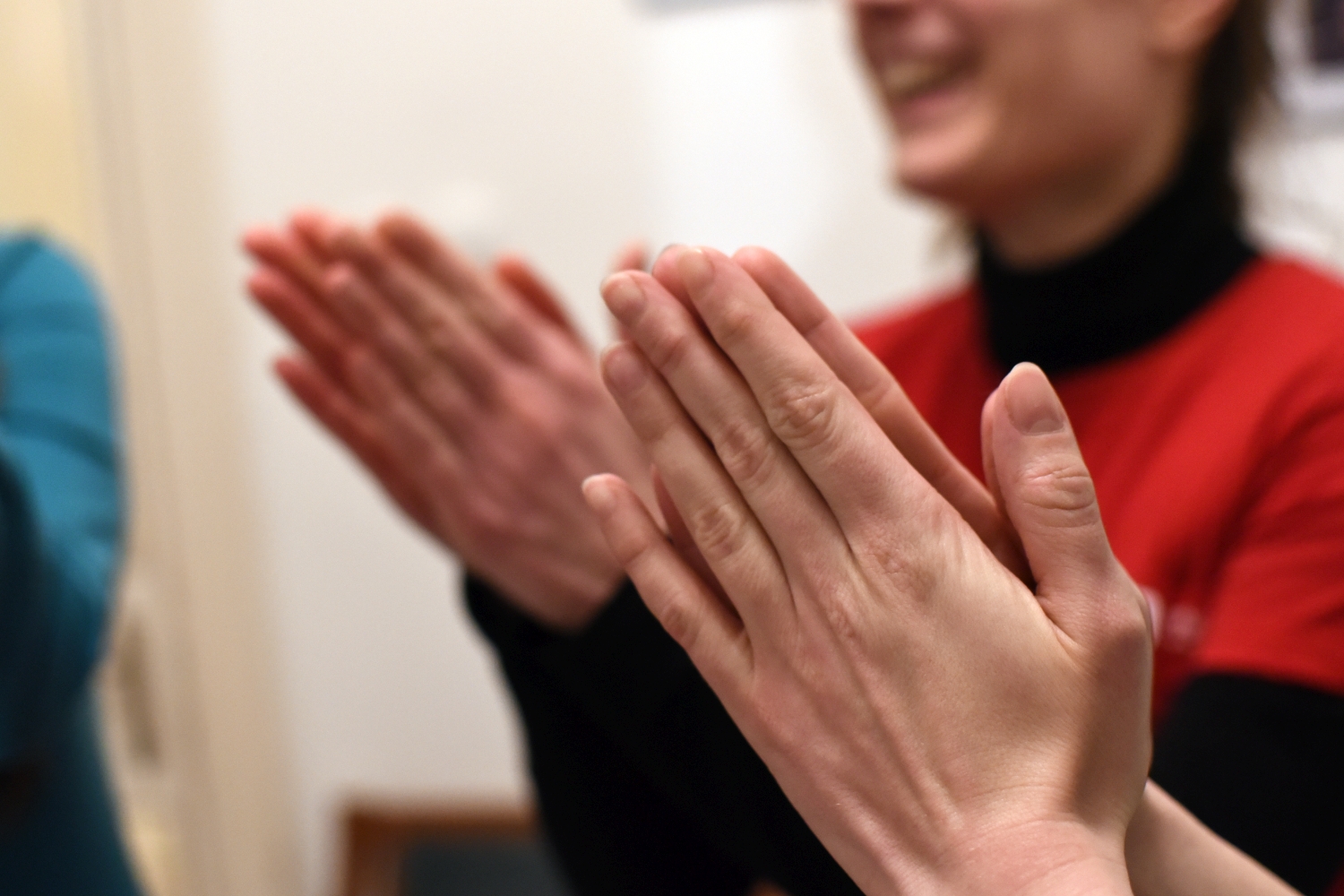Do as I’m Doing
23

Category
vocal
rhythmic
Age
12-25
Number of participants
8-12
Duration
approx. 15 min.
Working method
group work
Musical abilities of the trainers
1 2 3 4 5 6
Equipment and instruments
- optional: percussion instrument
- music player / app to play the song
Competences
- creativity
- collaboration
- attention
- concentration
- movement coordination
- rhythm recognition
- sense of rhythm
Do as I’m Doing
Singing a simple melody with movements
and rhythmic accompaniment.
AIM
The main objectives are to introduce participants to the joy of singing songs together, as well to provide some knowledge of musical experience, understanding and enjoyment. Besides developing their skills with these musical activities, participants can have a great time experiencing a flow state.
Description
It’s a simple follow me game: the participants imitate the leader while singing. Adapting to the text, we follow the instructions in the last line in movement: fast, slow, high and low.
For example: participants stand in a circle and clap in the tempo according to the lyrics. They can repeat the song with marching motions, then go back to clapping to finish song.
After a while, the leader passes the baton (for example to the person next to her/him in the circle), the point is that as many people as possible become leaders in the game.
At the beginning of the game, even learning the sounds is important, it is worth starting with simple movements. But afterwards, the imagination can be unleashed, what kind of movements we can invent while keeping the rhythm.
Lyrics
Do as I’m doing, follow, follow me,
Do as I’m doing follow, follow me.
If I do it high or low, if I do it fast or slow.
Comments for facilitators
During the activities be care of the steady beat.
There are countless versions of these popular songs, and they have varied in lyrics and melody over the years, so you can learn any version.
Percussion instruments can be used during the musical games, e.g. drums, percussion eggs, wood maracas, rhythm sticks, bells or castanets.








Recent Comments